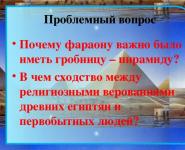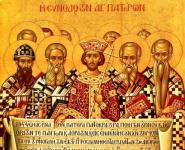Catholic Church of the Exaltation of the Holy Cross. Parish "Exaltation of the Holy Cross" Kazan Church of the Exaltation of the Holy Cross
Photo: catholic temple Exaltation of the Holy Cross
Photo and description
The Church of the Exaltation of the Holy Cross is located in the central part of Kazan, at the end of Peterburgskaya Street. The first Catholic parish appeared in Kazan in 1835. It existed thanks to Polish priests. The parish did not have its own building, and services were held in different buildings of the city. The location of the Catholic parish changed frequently.
In 1855, priest Ostian Galimsky filed a petition asking for the construction catholic church. The Catholic community was large enough and replenished regularly. Two years later, a positive decision was made, but with conditions: the temple should not have a typical Catholic look and should not differ from the houses surrounding it.
Construction began in 1855. The author of the project was A.I. Sand. The temple was consecrated in November 1858 on the feast of the Exaltation of the Holy Cross. In 1897, the Kazan parish of the temple consisted of 1760 people. Among the parishioners were professors of Kazan University: O. Kovalevsky, N. Krushevsky and many other famous people.
By 1908, the temple building was rebuilt and re-consecrated. In September, a parish school was opened at the church.
After the revolution of 1917, all valuables were confiscated from the temple to help the starving in the Volga region, and in 1927 the parish was dissolved, the church was closed. The Catholic parish of Kazan was restored in 1995. The Catholics were given a small chapel of the Passion of the Lord on Arsk cemetery. The chapel was restored with funds donated by Catholic parishes in several countries. In September 1998, the chapel was consecrated by Bishop Klemens Pickel.
In 1999, the city authorities allocated a piece of land to Kazan Catholics at the intersection of Aidinov and Ostrovsky streets. Construction new church started in 2005. At the construction site, a Mass was held to consecrate the cornerstone. They built the church for three years. In August 2008, the church was solemnly consecrated. The Dean of the College of Cardinals, Angelo Sodano, led the consecration Mass with Bishop Clemens Pickel and Nuncio Antonio Menini. Several other bishops and priests also took part in the Mass.
The building of the temple was built in the style of classicism. The facade of the old Temple of the Exaltation was taken as the basis for the project. The main façade of the building is adorned with a four-columned portico, on the sides of which there are symmetrically two quadrangular two-tier bell towers.
The interior of the temple is finished with white granite. The altar, pulpit and font are also white marble. There is a tall wooden cross in the presbytery. On the sides of the cross are statues of Christ the Savior and the Virgin Mary. The statues are made by craftsmen in Poland. A beautiful Italian organ was installed in the temple.
The Temple of the Exaltation of the Holy Cross has become an ornament and landmark of Kazan.
In the summer of 1907, the Catholic community submitted to the construction and technical department of the Vologda province a plan for the construction of a stone church building, according to the project of the architect I.V. Padlevsky. The city authorities allocated a site to the community on Galkinskaya Street. In August 1909, the first work on laying the foundation was completed; in the spring of 1910, the foundation was consecrated.
On October 19 (November 1), 1913, the provincial technical and construction commission examined the completed church building and gave permission for its operation. The act of the commission was considered by the Construction Department of the Vologda Provincial Board and approved by the vice-governor on October 23 (November 5), 1913 (minutes No. 480). October 27 (November 9), 1913 Canon Konstantin Budkevich, rector of the church of St. Catherine in St. Petersburg, solemnly consecrated the temple in the name of the Exaltation of the Holy Cross.
The main facade of the building had a massive semi-circular portal lined with granite and crowned with a stepped pediment, as well as a low tower, which had slots for narrow windows and ended with a gable roof with small stepped pediments on the sides. On the plan, the building had a cruciform appearance. The naves located on the side of the wall were cut through by two pairs of windows on two tiers: from above - with a semicircular completion, from below - with a rectangular one. The arms of the transept, which also had a stepped top, have two rectangular windows at the bottom, and a large semicircular window at the top. On the side of the altar component of the building, across the entire width of the transept, there is a two-story building designed for service needs, which is in perfect harmony with the temple. The annex served as a priest's residence, a parish house and a sacristy. The rear end of the two-story extension was decorated with a stepped pediment. General form The temple was compact and elegant, which still distinguishes it from the background of urban development. Built in 1913, the temple did not last long - until 1929. In 1911-1926. the rector of the parish was Father Jan Vorslav, in which he was arrested in the late 1920s. Fathers Vyacheslav Gluzinsky and Friedrich-Josafat Giscard helped him. In 1925-1926. a priest from Kostroma, father Jozef Yuzvik, came to the parish, who at the same time bordered the parishes of Kostroma, Arkhangelsk, Yaroslavl and Rybinsk. The size of the community has decreased significantly, because. many Polish families left for their homeland.
During 1917-1922 big number the city's Catholics were repressed. In 1929, a decision was made to liquidate the Catholic community and close the church. The temple was given to the city Young Pioneers Club. In the 1970s-1980s. The building was abandoned and was slowly falling apart. In March 1989, after repairs carried out by the Public Catering Trust, the Miskolc restaurant was opened in the temple. In Vologda in 1993 a Catholic community was formed and the Parish of the Assumption Mother of God. The Catholic parish of Vologda has repeatedly appealed to the authorities with a request to return the building. From the windows of the parish chapel you can see the temple building, one of the most unusual buildings in the city. In the winter of 1991, a lease agreement was signed for a building that used to be a temple. On September 9, 1993, the building was privatized and it became the property of Miskolc LLC, which, since 2012, has been independently restoring and rebuilding the building. During these years, the building was resold and rented out (including to the CULT nightclub).
At the moment, the building houses the Miskolc entertainment center (named after the third largest city in Hungary, known as a settlement since the Paleolithic era that has preserved traditional medieval culture and buildings, or the Hungarian women's basketball team of the same name), as well as a restaurant. The building is certified as a revealed architectural monument, as an object of the cultural heritage of Russia. For twenty years the Catholic community has been unsuccessfully fighting for the return of the church to the parish. On September 15, 2014, Archbishop Pavel Pezzi visited the parish of the Assumption of the Mother of God in Vologda to celebrate the centenary of the construction of the Church of the Exaltation of the Holy Cross. The parish has priests called verbists, the Congregation of the Society for the Word of God (SVD), founded in 1875 by St. Arnold Janssen. There are concerts of classical music, including organ. In the summer vacations are organized for the children of the parish, and pilgrimage trips are made.
Question: Recently I was walking along Ostrovsky Street and saw an original church near Basket Hall, not like our churches. What is this temple?
Konstantin
Answer from a student of the Institute of Social Technologies Tatiana DUNYASHEVA:
At the intersection of Ostrovsky and Aydinov streets is the Catholic Church of the Exaltation of the Holy Cross. This temple attracts the attention of not only the Catholics of our republic, but also pilgrims from different cities of Russia and even the world. Of particular interest to them are the Christian shrines stored in it - the miraculous statue of the Fatima Mother of God and a particle of the Cross of the Lord.
Tourists are also attracted by the very history of the emergence of a Catholic church in Kazan. It is worth clarifying that Catholics, as a rule, Germans by nationality, have lived in the Volga region since the 18th century. The construction of this temple took three years. The grand opening took place on August 29, 2008.
A permanent Catholic parish in Kazan appeared in 1835. The premises where the liturgy was celebrated and where the priests lived were at first located in the building of the city magistrate (currently house 3 on Bauman street), in 1847 the parish was moved to the Lebedev house (currently house number 19 on Karl Marx street), then to Kiselevsky's house (currently house 68/25 on Bolshaya Krasnaya Street), later - to Yanovsky's house (now not preserved).
In 1856, the issue of accommodation was officially resolved, and soon the stone building of the temple was built and consecrated according to the project of Alexander Ivanovich Peske, wooden house for the clergy, a little later - a wooden wing of the service. The constructed buildings were repaired as the city improved. After the decree of Nicholas II of April 17, 1905 "On Tolerance of Religions", restrictions on the appearance of churches of Christian confessions were abolished. Now they could be built in the form of temples. Catholic symbols of the temple could also be introduced, bell towers could be erected. Then the parish began work on the expansion of the temple. The restructuring project was drawn up free of charge by the provincial engineer Lev Kazimirovich Khrschonovich, and the appearance of the building changed beyond recognition. On September 14, 1908, the church was consecrated and opened for worship.
 This was the church in the 1930s
This was the church in the 1930s
After the establishment of Soviet power, the parish continued to work, but only for a while. In 1921, his activities were stopped. Later, the building of the church was transferred to the Kazan Aviation Institute (currently - KNRTU-KAI named after A.N. Tupolev) for the aerodynamic department. Only a small chapel at the Arsk cemetery remained active.

The Catholic parish in Kazan was restored and registered in 1995. Due to the difficulty of moving the wind tunnel from the historical Catholic church in 1999, the Kazan mayor's office decided to allocate a site in the city center at the intersection of Ostrovsky and Aidinov streets to Kazan Catholics for the construction of a new church. Construction began in 2005. The cornerstone consecration mass took place on September 11, 2005.

Today, the life of the community is well-established: with the help of sisters and active parishioners, catechization of children, youth and adults is carried out, youth meetings are regularly held, choir classes, foreign language lessons, theater performances are organized. Charitable foundation "Caritas", apostolic movement "Legion of Mary" work at the temple. The parishioners publish the newspaper Our Parish.


